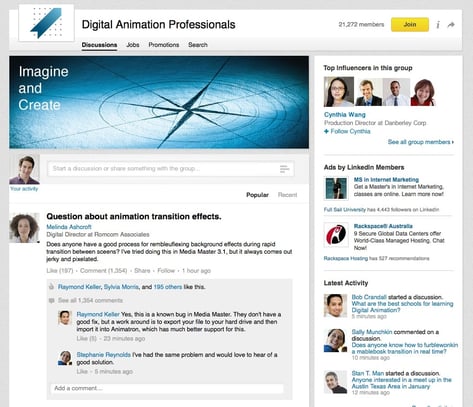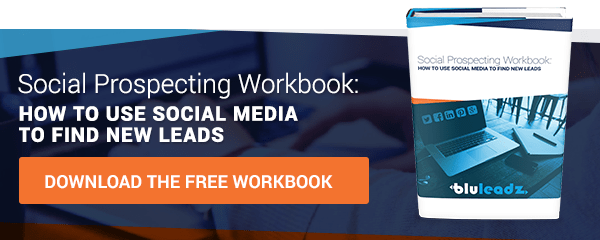While there are a number of practices businesses can use to connect with certain target audiences over social media platforms, there’s one that always seems to fly under the radar: segmentation. That is, the practice of segmenting audiences into targeted, specific groups, and generating leads out of those groups through specialized content and contact.
Social media contests, videos and guest articles are all great things you can use to your marketing advantage, there’s no denying that; however, segmentation is one crucial aspect of social media marketing that not enough businesses are capitalizing on today.
In this blog, we’ll give you some helpful pointers on social media segmentation, and outline effective strategies you can use to start targeting specific audiences and pull from an untapped pool of potential leads on social media.
The Best Social Media Targeting Practices
 Paid social media advertising and targeting has become an essential practice for companies that can make the investment into it. This is true for virtually every major social platform, including Facebook, Twitter, LinkedIn and Pinterest (the last of which just entered the e-commerce industry with integrated product purchase features).
Paid social media advertising and targeting has become an essential practice for companies that can make the investment into it. This is true for virtually every major social platform, including Facebook, Twitter, LinkedIn and Pinterest (the last of which just entered the e-commerce industry with integrated product purchase features).
In paid advertising campaigns, you can target users on these platforms using custom set criteria, which puts you in direct contact with qualified, specific audience bases. Criteria can include:
- Age
- Occupation and industry
- Geographic area
- Interests, likes and behaviors
However, while paid social media advertising is an effective practice businesses can use to reach audiences on today’s most popular social sites, organic targeting still has its place. For instance,
Facebook lets users target individual posts based on gender, age, language, relationship status, education, location and interests; that’s a lot of targeting criteria your business could be using right now for free. The same goes for LinkedIn, which allows users to organically target audiences based on company size, industry, user function and user seniority.
Consider Setting Up Multiple Accounts
Creating multiple social media accounts on each platform is one tactic that many growing companies use to connect with certain groups within their intended audience. The more service types you offer or messaging you want to use on social media, the more accounts you should set up.
For instance, many large businesses now feature an account solely for customer support, separate from their main social media accounts. This gives users a place to discuss problems directly with a company over social media, which in turn lets other users see and comment on the support provided. This also applies to any special events you may have, such as an annual conference or quarterly user group meeting.
Additionally, some companies create separate accounts to tailor content for regional audiences. For companies working internationally, social media messaging and content for targeted European audiences would have to be quite different than content for U.S. audiences.
Leverage Groups & Lists
 Other ways to segment audiences and reach specific sets of users with specific criteria are setting up groups and using social media lists. Groups, which can be closed or open, allow companies to bounce discussion between themselves and users, and between users themselves. It’s this kind of forum atmosphere that lets companies hear audience ideas and values straight from the source.
Other ways to segment audiences and reach specific sets of users with specific criteria are setting up groups and using social media lists. Groups, which can be closed or open, allow companies to bounce discussion between themselves and users, and between users themselves. It’s this kind of forum atmosphere that lets companies hear audience ideas and values straight from the source.
Open groups facilitate broad conversation, while closed groups give you insights into trusted or qualified users, based on whatever criteria are set. LinkedIn groups are an especially viable, segmentation tool companies can use to reach professional audiences based on interest and industry.
As an inbound marketing agency, custom email lists and segmented campaigns based on these lists are essential to what we do. The power of the list is real, which is why several social platforms, like Facebook and Twitter, allow users to create social monitoring lists of their friends, followers and other set parameters.
Through HubSpot, users can actually combine their social monitoring and email lists, and configure streams based on buyer personas, leads and customers. These functions streamline conversations with social media contacts, and allows users to more efficiently target qualified audiences.
Segmentation and targeted social media publishing are incredibly valuable practices that not enough companies and marketers are taking advantage of today. However, segmentation is just one component of the perfect social media strategy for business. To get the most out of these platforms, you’ll also have to consider your intent in posting, your posting behaviors and, of course, the quality of what you have to say.


Alex Dunn
Alex is a University of South Florida mass communications graduate and Video/Media Specialist at Bluleadz. He is a big movie nerd, loves (possibly dangerous) concerts and enjoys taunting co-workers with a camera. He's probably seen The Royal Tenenbaums 14 times by now.